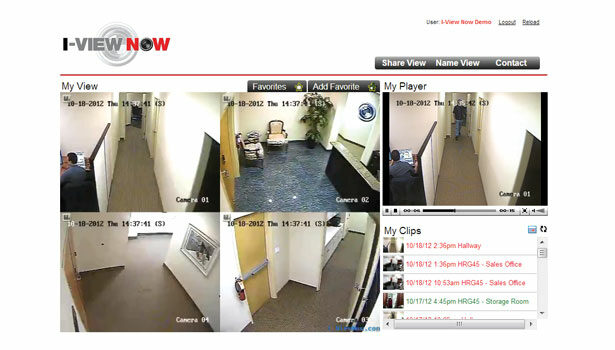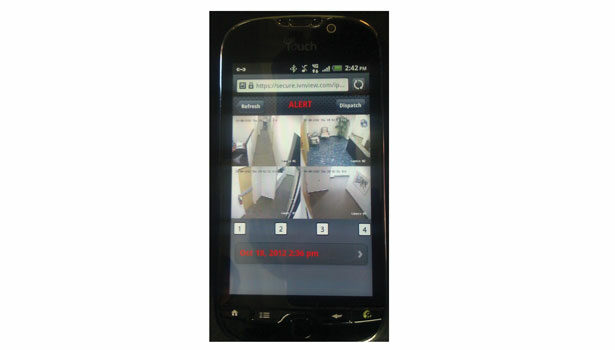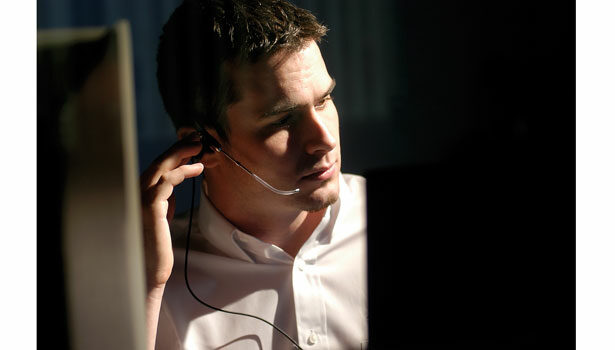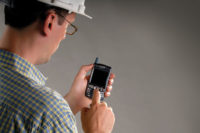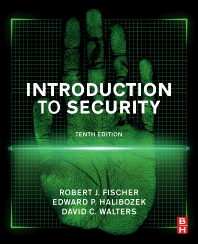At the Central Station Alarm Association (CSAA) meeting in October, there was plenty of buzz about video alarm verification as participants engaged in healthy discussion and debate on the issue. While proponents of video verification are excited about the advancing technology and the possibilities verified alarm systems have to offer, advocates for more traditional systems are not so sure. However, forces outside the security industry may soon drive them to reconsider.
It’s no secret that false alarms are a huge problem for both law enforcement and the security industry. The industry consensus is that somewhere near 98 percent of signals are false alarms. In a 2003 study, the Broward Sheriff’s Office in Broward County, Fla., determined that deputies wasted 1,000 hours a month on false alarms. With shrinking budgets and increasing demands on their resources, law enforcement agencies are being forced to allocate their resources where they can do the most good. “All responders are trying to figure out how to do more with less,” says Larry Folsom, president of I-View Now, located in Henderson, Nev.
Many jurisdictions already have ordinances that levy steep fines when officers are dispatched for false alarms, and an increasing number of communities are enacting ordinances that require some type of verification before police will respond to a signal. “Verification is coming to the industry whether everybody wants to own up to it or not,” says John Ray III, president and chief executive officer of Florida-based Sonitrol of Fort Lauderdale.
Enhanced call verification (ECV) has been effective in reducing the number of police dispatches for false alarms. “That alone results in a 60 percent reduction in dispatches,” says Ron Walters, director at the Security Industry Alarm Coalition (SIAC), Frisco, Texas. Audio and video verified systems provide more information than an alarm signal notification call from a monitoring center. Don Young, chief information officer of Chicago-based Protection 1, says the additional information provided by video verification makes a big difference in working with the police. “Nothing compares to being able to tell dispatch, ‘I’m seeing a crime in progress.’ This kind of verification drives a different behavior in law enforcement.”
Bill Heine, senior director, global security, for Dallas-based Brinker International, says his company had been unsatisfied with the traditional security systems they had deployed to protect their restaurants.
“We were spending a lot of money on maintenance, monitoring, and false alarm fines. Enough that what we spent exceeded what we lost,” Heine recalls. After success with video verified systems installed at some locations, the company changed its new construction requirements to include video verified systems at all new restaurants. “It’s less expensive with better results that the police departments love,” Heine observes. He adds that, after years without a single arrest of an intruder under the previous systems, the video verified systems are producing significant results. “When we installed these systems, within in the first 12 months, we had a lot of apprehensions,” he says.
To better manage resources in dealing with the high number of alarms, some police departments are beginning to give higher priority to verified alarms. Police response to video verified alarms can be much faster, says Keith Jentoft, president of Videofied by RSI Video Technologies Inc., Vadnais Heights, Minn. Jentoft is also executive director of the recently established Partnership for Priority Video Alarm Response (PPVAR), an organization created to promote collaboration among leaders in law enforcement, insurance, and the security industry. Citing 2011 data from Chula Vista, Calif., as an example, Jentoft says, the average police response time to a video verified alarm was 5 minutes and 5 seconds as compared to 19 minutes and 18 seconds for traditional alarms. Faster response times can lead to increased arrests because police arrive at the location while the suspects are still present. “Video verified alarms have proven arrest rates of over 20 percent and can reach as high as 70 percent. Traditional alarms have documented arrest rates from 0.02 percent to 0.08 percent, which is less than one arrest out of every 1,000 alarms,” Jentoft details.
Law enforcement agencies are getting behind the idea. “You put a system in that helps them apprehend criminals and improve crime statistics in the area, they’re all for it,” says Lance Holloway, technology leader, global vertical market solutions for Stanley Convergent Security Solutions (Stanley CSS), headquartered in Naperville, Ill.
“This technology effectively creates a force multiplier for the law enforcement official,” says Fred Lohmann, director of field operations, southwest region, for the National Insurance Crime Bureau (NICB).
The police are not the only ones getting behind video verification. The insurance industry is interested as well. “We saw this technology gives law enforcement a way to make arrests, stop repeat offenders, and recover property,” Lohmann recalls. “Economically, we could see benefits to our industry by reducing crime and reducing loss ratios to insurers.”
Some insurance underwriters are starting to offer incentives to customers who install video verified alarm systems. “They were suggesting as high as a 30 percent discount on premiums for video verification,” Young says, comparing it with 20 percent discounts offered for installing an alarm system.
With law enforcement and insurance companies on board and the technology becoming easier to use, dealers may find that offering alarm verification may soon become inevitable. Besides providing better service to the customer, alarm verification offers significant advantages to dealers as well.
Offering verification helps dealers distinguish themselves from the competition. “There has to be a tangible or intangible way to bring more value,” says Mark Recene, chief innovation officer and vice president of sales at Baltimore-based HS Technology Group (HST), which received the 2011 Police Dispatch Quality (PDQ) Award. HST includes ECV as one aspect of its comprehensive approach to reduce false alarms and strengthen relationships with local law enforcement. The company is also adding video verification options for both its commercial and residential customers.
With growing competition, some dealers are using verification as a way to distinguish themselves by offering customers better service. “For us, we have to be a boutique, above-and-beyond service type of company,” Recene describes.
While alarm verification has been primarily used on the commercial side, he sees opportunity to expand into the residential sphere as well by working with law enforcement. “If more alarm companies participate in this, police departments will take residential alarms more seriously,” he adds.
Upon learning how much security customers were budgeting to pay for false alarm fines on top of what they were paying for their security services, Jentoft began to wonder what they would be willing to pay for better service. “Some forward-thinking alarm companies see that as a huge opportunity to upsell,” Jentoft says.
Perhaps the biggest advantage video verification has for security dealers is the opportunity to significantly increase recurring monthly revenue (RMR). “By adding verification and pricing it correctly, you find a great way to add to your RMR base,” Holloway predicts.
Folsom says that I-View Now offers video verification with its standard security package and sees an attachment rate for verification on small systems of about 55 percent: “Adding $40 a month to our standard monitoring price for 55 percent of our small systems sales is a significant increase in our average monthly.”
Dealers who offer video verification along with other services may see even higher returns. “It can increase their RMR substantially, probably a good 50 percent with just verification,” says John Estrada CEO of Reston, Va.-based CheckVideo. “By taking advantage of the technology and other services, you can actually increase RMR by an order of magnitude.”
Alarm verification presents a great opportunity for the industry to win on all fronts, with law enforcement by reducing false alarms, with insurance companies by reducing losses, and with customers by providing a valuable service, Young shares. By partnering with law enforcement dealers can not only help shape the future of the industry, but also play an important role in reducing crime. “It’s about who we are in the community,” says Holloway. “When we can collaborate that way, we can change what is going on.”
This article was originally published in the print magazine as "Verified Alarms, Verifiable Results."
Types of VerificationSeveral options are available when it comes to central station alarm verification. Each type of verification may be used alone or in conjunction with the others to further enhance the effectiveness of the system.
Enhanced Call VerificationEnhanced call verification (ECV) is standard practice for alarm verification, and many communities are adopting regulations requiring it. ECV requires two calls from the central station when an alarm code is received: the first to the premises, and a second call to a designated contact person. ECV has been shown to be effective in reducing the number of false alarm dispatches. With ECV, a physical visit to the premises by a key holder may still be necessary.
Audio alarm verificationAfter receiving an alarm signal, central station operators listen to activity on the premises through microphones installed strategically throughout the protected site. If the operator hears suspicious individuals or activity on the premises, the police will be notified. Audio works best for indoor installations and is useful for securing areas where camera coverage may be limited or undesired. Two-way audio systems enable operators to speak to individuals at the site of the alarm. This can be used to confirm an alarm or deter criminal activity by advising unauthorized individuals to leave the premises.
Video alarm verificationWhen an alarm is triggered on a video verified system, camera images (either a video clip or a series of still shots) capturing the activity immediately preceding and following an alarm signal are sent to the central station. Video verification differs from standard video surveillance in that the video verification clips are triggered by an alarm event to provide station operators, end users, and authorities with information to make decisions and respond immediately.
Other technologiesVideo analytics provide additional help in reducing false alarms by providing assistance in distinguishing legitimate threats from benign activity (e.g. blowing foliage, waves, animals on premises). With user-defined rules, pattern recognition, and self-calibrating analytics that enable the system to adapt to the environment and “learn” to disregard non-events, video analytic solutions can help filter out non-threatening activity before an alert signal is sent, says Marianne Rocco, director of channel marketing at Bedford, Mass.-based VideoIQ. This technology is especially well-suited to challenging environments (such as ports and remote utility sites) that are susceptible to extreme conditions.
Combined verificationSystems employing more than one type of verification offer the most benefits. Audio and video systems typically include ECV as well. Combining audio and video maximizes the information available to the station operator, as well as options for responding to it. Video systems that incorporate two-way audio can be used to deter criminals, resulting in 80 to 90 percent loss prevention rates, Rocco says. |
Creative Applications of Technology
Video alarm verification is often considered for use with intrusion alarms for commercial or municipal buildings. However, smart dealers are finding a variety of creative ways to apply the technology.
Vacant PropertiesVacant properties are especially vulnerable to theft and vandalism. “With a vacant building, police assume it’s a false alarm,” says Bill Heine, Brinker International. “We had significant losses in vacant buildings, and the losses rendered the buildings useless.” In the first year after installing video verified systems at some locations, Brinker has seen a dramatic increase in the number of apprehensions.
Construction SitesWith the presence of expensive equipment and materials, construction sites are not only attractive targets for thieves, but they can also be logistically challenging to secure. Mark Recene, HS Technology Group (HST), says that his company has used video verification to help secure these sites. Setting up video verified cameras triggered by vehicle movement enables HST’s clients to prevent losses of large equipment and materials. In one case, a client reported the arrest of electrical contractors who returned to the site after hours to steal the wiring they had delivered earlier that day.
Internal LossesEmployers want to be able to trust their employees, but inside theft can be a real problem for some businesses. Video verification technology can help business owners prevent inside theft. By using cash register access to trigger the video, owners can see exactly who is accessing the register with a given code (which are sometimes stolen from other employees) and provide the owners with evidence for prosecution or dismissal.
Other technologiesVideo analytics provide additional help in reducing false alarms by providing assistance in distinguishing legitimate threats from benign activity (e.g. blowing foliage, waves, animals on premises). With user-defined rules, pattern recognition, and self-calibrating analytics that enable the system to adapt to the environment and “learn” to disregard non-events, video analytic solutions can help filter out non-threatening activity before an alert signal is sent, says Marianne Rocco, director of channel marketing at Bedford, Mass.-based VideoIQ. This technology is especially well-suited to challenging environments (such as ports and remote utility sites) that are susceptible to extreme conditions.
Combined verificationSystems employing more than one type of verification offer the most benefits. Audio and video systems typically include ECV as well. Combining audio and video maximizes the information available to the station operator, as well as options for responding to it. Video systems that incorporate two-way audio can be used to deter criminals, resulting in 80 to 90 percent loss prevention rates, Rocco says. |
